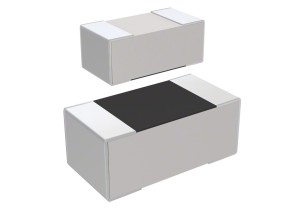What's the difference between capacitors, resistors, and inductors?
In the vast landscape of electronic components, capacitors, resistors, and inductors stand as pillars of functionality, each playing a distinct role in shaping the behavior and performance of electrical circuits. These fundamental components exhibit unique characteristics, functions, and behaviors that differentiate them from one another, offering designers and engineers a diverse toolkit for building and optimizing electronic systems. In this blog post, we delve into the key differences between capacitors, resistors, and inductors, unraveling their individual properties, applications, and contributions to the world of electronics.
Capacitors: Storing Energy and Filtering Signals
Capacitors are passive components that store electrical energy in the form of an electric field between two conductive plates separated by a dielectric material. Capacitors exhibit capacitance, a measure of their ability to store charge, and are commonly used in circuits for energy storage, signal filtering, timing, and decoupling purposes. Capacitors come in various types, including electrolytic, ceramic, and tantalum capacitors, each offering unique characteristics suited for specific applications.
Resistors: Controlling Current and Voltage
Resistors are passive components that impede the flow of electrical current in a circuit, thereby controlling the amount of current that passes through them and the voltage drop across them. Resistors exhibit resistance, measured in ohms, and are utilized in circuits for current limiting, voltage division, signal conditioning, and impedance matching. Resistors come in different types, such as fixed resistors, variable resistors (potentiometers), and specialized resistors like thermistors and light-dependent resistors.
Inductors: Storing Energy in Magnetic Fields
Inductors are passive components that store electrical energy in the form of a magnetic field when current flows through them. Inductors exhibit inductance, measured in henries, and are characterized by their ability to oppose changes in current flow. Inductors are essential in circuits for energy storage, filtering, impedance matching, and electromagnetic interference suppression. Different types of inductors include air-core inductors, iron-core inductors, and toroidal inductors, each offering unique properties for specific applications.
Key Differences Between Capacitors, Resistors, and Inductors
1. Functionality:
- Capacitors: Store electrical energy and release it when needed, filter signals, and provide energy storage.
- Resistors: Control current flow, limit voltage, and dissipate energy in the form of heat.
- Inductors: Store energy in magnetic fields, resist changes in current flow, and filter out high-frequency signals.
2. Response to Voltage and Current Changes:
- Capacitors: Respond to changes in voltage by storing or releasing energy.
- Resistors: Have a linear response to changes in current and voltage.
- Inductors: Oppose changes in current flow by inducing a voltage across their terminals.
3. Impedance Behavior:
- Capacitors: Offer low impedance to high-frequency signals and act as open circuits at DC.
- Resistors: Impose a constant resistance to current flow regardless of frequency.
- Inductors: Exhibit high impedance to high-frequency signals and low impedance to DC..
4. Energy Storage:
- Capacitors: Store energy in an electric field.
- Inductors: Store energy in a magnetic field.
- Resistors: Dissipate energy in the form of heat.
Applications and Significance in Electronics
- Capacitors: Used in power supply filtering, energy storage in electronic devices, timing circuits, noise suppression, and coupling and decoupling applications.
- Resistors: Employed in voltage division, current limiting, signal conditioning, biasing circuits, temperature sensing, and voltage measurement.
- Inductors: Found in power supply filtering, energy storage in inductive loads, transformer and inductor design, RF circuits, and impedance matching applications.
Conclusion: Harnessing the Power of Capacitors, Resistors, and Inductors
In the intricate tapestry of electronic circuits, capacitors, resistors, and inductors play vital roles as essential building blocks that shape the behavior, functionality, and performance of electrical systems. By understanding the unique characteristics, functions, and applications of these fundamental components, designers and engineers can leverage the diverse properties of capacitors, resistors, and inductors to create innovative, efficient, and reliable electronic designs that power a myriad of devices, systems, and technologies.
As we traverse the diode landscape and uncover the myriad types and functions of these semiconductor devices, let us appreciate the ingenuity, versatility, and transformative power that diodes bring to the world of electronics. By harnessing the unique properties and capabilities of diodes, designers and engineers can craft innovative, efficient, and reliable electronic systems that drive progress, innovation, and technological advancement in myriad fields and industries.

